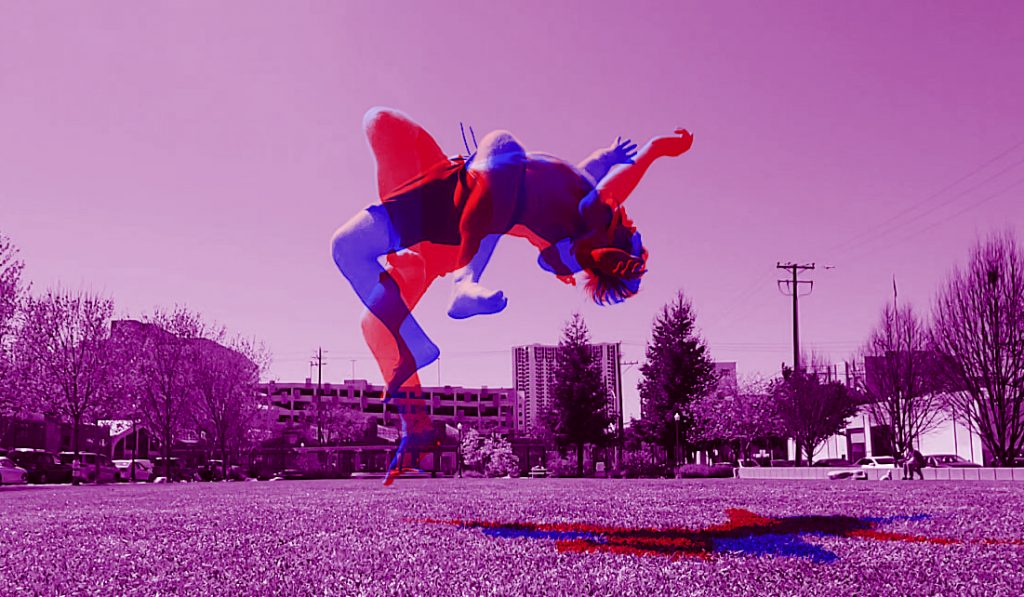Ten Theses for a Practice of Experimental Acrobatics
April 1, 2021
As I continue working on a much larger tract (which has turned into a larger undertaking than I expected it to), I wanted to share the current draft of my "Manifesto for Experimental Acrobatics," itself a work in progress, (subject to shapeshift, expand, shrink, or disappear) to start getting some of these thoughts out of my head and into the world at large. And while I realize this might read as somewhat abstract outside of a larger context, my hope is that abstraction opens up a door for free interpretation rather being merely confusing.
Return to Writing
- The Experimental Acrobat does not insist upon a value differentiation between Experimental Acrobatics and non-Experimental Acrobatics. Neither is better, neither is worse, but there are operative differences in how each are performed.
- Experimental Acrobatics borrow movement patterns from various movement disciplines in a way that allows the performer to use their body as a tool of communication without being limited by the "closed system" of a single discipline.
- Experimental Acrobatics resist the insistence that a specific movement pattern must serve a specific utility within the confines of a system of movement. A movement pattern's original use may be subverted or ignored in favor of expressive capacity or for the purpose of continuity (or for any given reason the performer decides upon).
- Experimental Acrobatics refuse the insistence that a movement pattern must fit a specific formal consideration, recognizing that different bodies move in different ways, and refusing the idea that there is (or even can be) a platonic "ideal" of any given movement pattern.
- Experimental Acrobatics often appear "formless" to the gaze of an outsider—known or identifiable movement patterns will become transparent, allowing the performance to serve as pure expression rather than as mere identifiable (or nameable) movement pattern. This forces the viewer to encounter the movement in itself, rather than considering what a known movement pattern signifies.
- Experimental Acrobatics must not be formless. This is to say, one must not be a dilettante to be an Experimental Acrobat, rather one must have an articulated level of control of their body to perform with efficacy.
- Experimental Acrobatics set out with an intention divorced from the mere spectacle of skill-demonstration that marks the traditional "use-value" of (spectacle-based) acrobatics in favor of communicating something other than mere difficulty or extreme precision.
- Experimental Acrobatics refuse any inherent utilitarian use-value as spectacle, and are performed exclusively for the experience offered to the do-er of the experimental acrobatics.
- Experimental Acrobatics refuse the hierarchical consideration that a movement pattern requiring a higher level of skill or practice is inherently more valuable than a movement pattern that is demonstrably simple in its execution. The value of a movement pattern is rather considered via the expressive or communicative efficacy of any given movement pattern within the specific container of a singular "performance." Despite this, Experimental Acrobatics do not exclude the possibility that a high level of difficulty is built into a movement pattern.
- Experimental Acrobatics find the acrobat setting forth a hypothesis of whether or not a movement pattern is possible, and then exploring ways to test this hypothesis. If a movement pattern is determined to be impossible, this does not inherently end the experiment.
- Experimental Acrobatics set out to explore untraveled pathways for the body to follow, mapping patterns formerly unavailable to the body across disciplines, exploring the limits (and the edges) of how far the (assisted or unassisted) body can go.
Return to Writing
Mike Kitchell, 2020-2022